Access Flooring Q & A
Selecting a Product
What types of access flooring are there?
Also, what types of materials are good for access flooring?
Access flooring is largely divided into three types. They vary by characteristics and materials used, as you can see below.
Product Comparison
| A. Laid Panel Type with Cable Path Channels | B. Laid Panel Type | C. Pedestal Type with Adjustable Height |
|---|---|---|
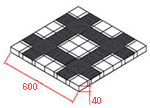 |
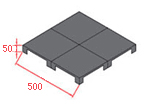 |
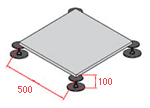 |
| Made of concrete (Network Floor) |
Made of plastic | Made of steel |
| Concrete access flooring (Network Floor) is... Relatively heavy, but has superior durability and cabling capabilities. Also, it is as comfortable to walk on as a regular floor. |
Plastic access flooring is... Lightweight and only provides a minimal burden on the building, but when you walk on it, the plastic gives you a particular feeling of uneasiness. It also has issues with durability and flammability. |
Steel access flooring is... Adjustable in regards to height and provides lots of space for cabling, but it makes a deep, low sound when you walk on it. It is also likely to rattle and creak in the future. |
You're definitely going to need at least enough cabling space for each workstation and you will probably need more in the future. So, shouldn't you get taller access flooring?
In a regular office, that would not be necessary. The reason is that even though the Network Floor has a low-profile design, if you use Feed-In Mat N, you can get more cabling capacity than other access floors.
Access Flooring Effective Cabling Height Comparison
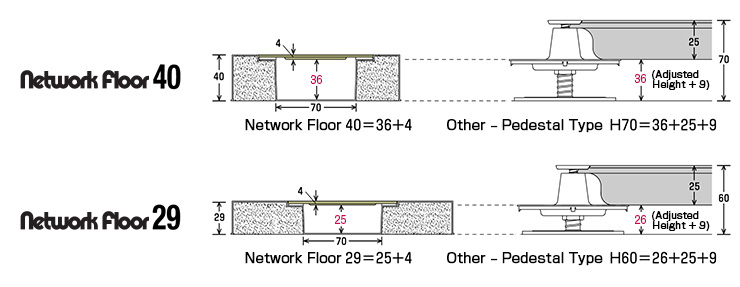
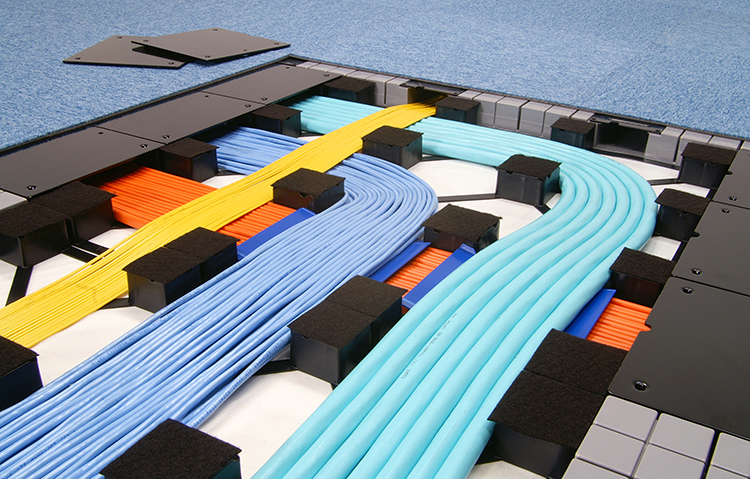 In this picture, the Network Floor is storing enough LAN cables for 233 workstations.
In this picture, the Network Floor is storing enough LAN cables for 233 workstations.
Can you install access flooring without moving large furniture around?
If you're using the low Network Floor, there won't be any problems opening and closing furniture doors, so the Network Floor can be brought in and installed without moving large furniture.
In Japan, furniture cabinets are usually about 50 - 70 mm tall.
The Network Floor is only 29mm or 40mm high, and even with the tile carpet (about 7mm), it stays under 50mm high, so it won't cause any problems with opening or closing cabinet doors.
- Total Height of Network Floor 29 (with Tile Carpet) : 36mm
- Total Height of Network Floor 40 (with Tile Carpet) : 47mm
Product Specifications and Capabilities
If the Network Floor begins rattling or creaking after installation, what should we do?
The Network Floor is designed to conform to unevenness in the floor. It is difficult to rattle and creak.
Maintenance will also never be necessary, so you will not incur any maintenance costs.
Pedestal type access flooring, however, will often gradually start to creak and rattle. To fix it, the flooring will need to be adjusted periodically, and/or panels will need to be replaced.
If you install the Network Floor, won't it change how the flooring feels?
It will feel the same as regular flooring. That's because the Network Floor's flexible concrete mats conform to grooves in the flooring surface.
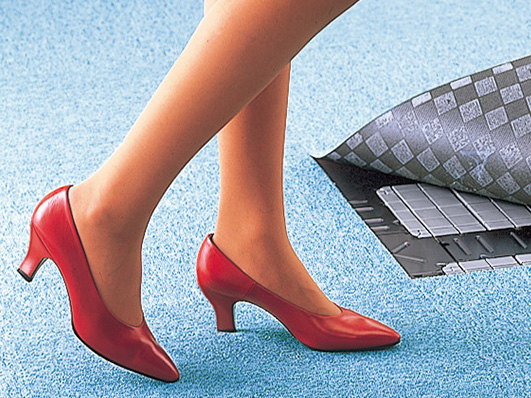
Are there are any standards for certifying the capabilities of access flooring?
 Japanese Public Buildings
Japanese Public Buildings Association Approved Quality-Performance
Product Certificate of Approval
Selecting access flooring that has obtained this certification would be the safest choice.
Costs and Benefits
If we wanted to change the layout after installing the Network Floor, would it be easy to change the cabling around?
Also, would that bring about any extra costs?
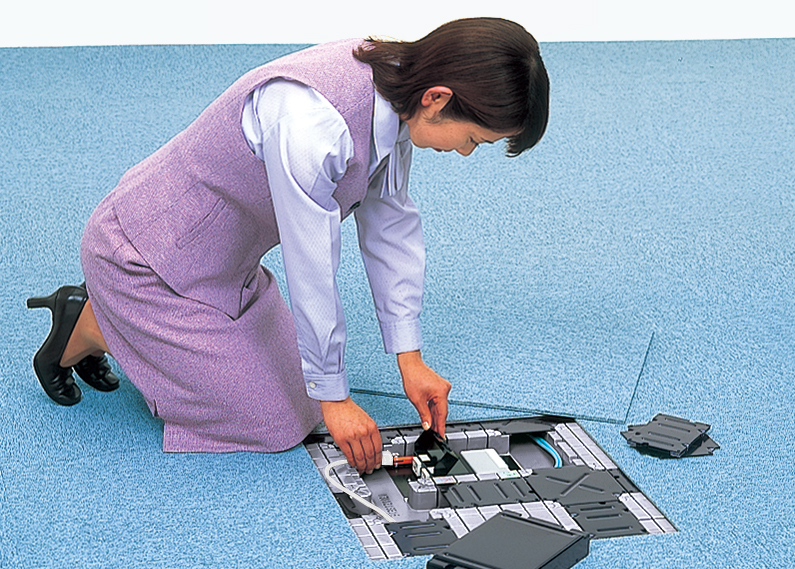 There would be virtually no cost for cable maintenance in relation to changing your layout. That's because office workers can add and remove cables and outlets by themselves.
There would be virtually no cost for cable maintenance in relation to changing your layout. That's because office workers can add and remove cables and outlets by themselves.
Is there any benefit to installing the Network Floor in a new building?
The Network Floor has been installed in a large number of new buildings. Here are some of the benefits that actual users have mentioned:
- The floor is low-profile, which helps to keep building costs down.
- It preserves room height.
- It feels as nice as regular flooring.
- It's easy to use and easy to manage cables.
Is there any maintenance required after installation?
No, it is not necessary.
Pedestal type access flooring will often gradually start to creak and rattle, requiring periodic adjustment.
The Network Floor, however, is designed to conform to unevenness in the floor. So, it is difficult to rattle and creak.
Is there any benefit to using low-profile flooring?
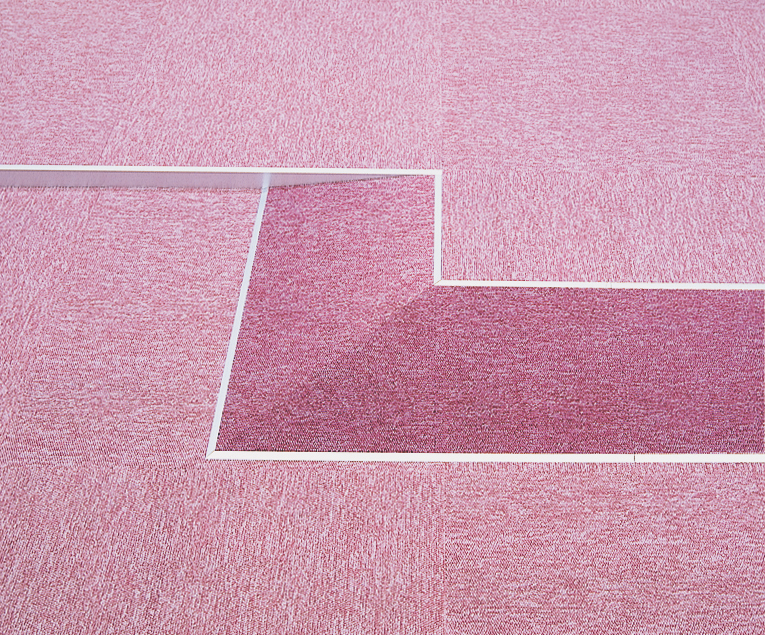 There are many great benefits to using low-profile flooring.
There are many great benefits to using low-profile flooring.
With the low-profile Network Floor, you will hardly notice things like entrance ramps or impact on room height. The Network Floor also fulfills the requirements of the Barrier-Free Act for the Disabled.
Other Installation and Procedure Information
Can you install partitioning above the access floor?
If using the Network Floor, partitioning can be directly secured to the floor slab with ease from above the floor.
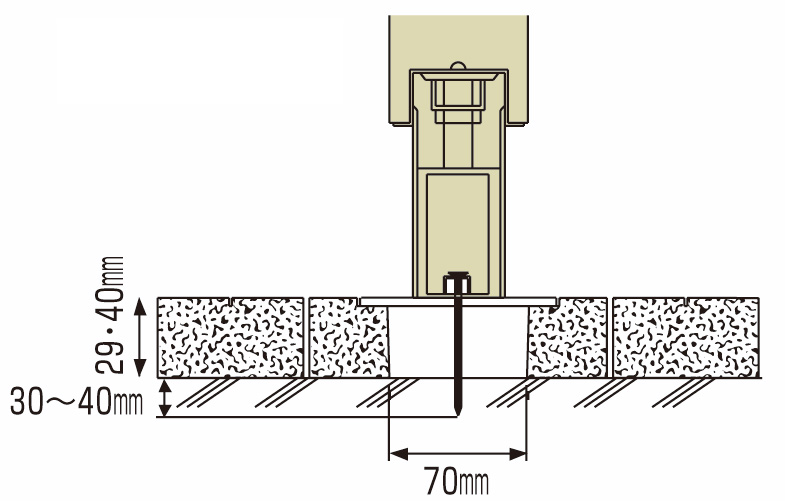 ・Easy Movable Partition Installation (Post-Installation)
・Easy Movable Partition Installation (Post-Installation)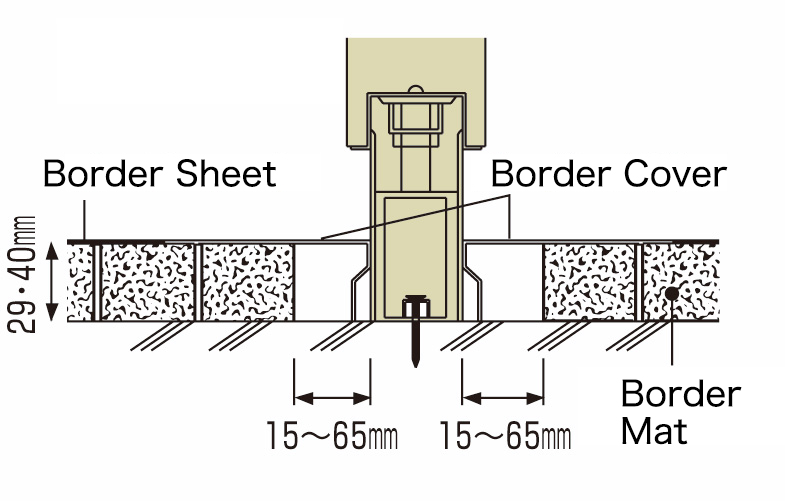 ・Easy Movable Partition Installation (Pre-Installation)
・Easy Movable Partition Installation (Pre-Installation) I want to earthquake proof my furniture (archives). Can you secure furniture against earthquakes from above the access floor?
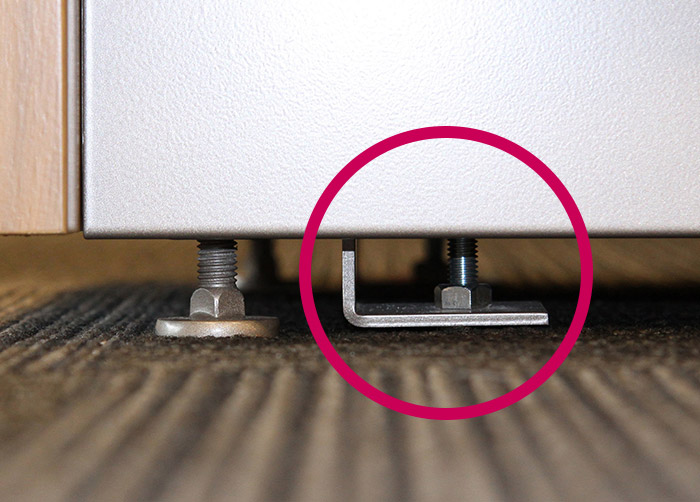 Earthquake Proofing Heavy Archives
Earthquake Proofing Heavy ArchivesFor more information, please refer to the page on Network Floor Features.
Cable Management
What types of outlets are there? Are they all the same?
Largely speaking, there are in-floor outlets and dual-purpose in-floor outlets that allow you to connect to them from above the floor.
In-floor connectors do not stick out from the floor at all, so you can put power strips and other things anywhere you want. The dual-purpose type allows you to connect directly to the in-floor outlet by passing through the lid.
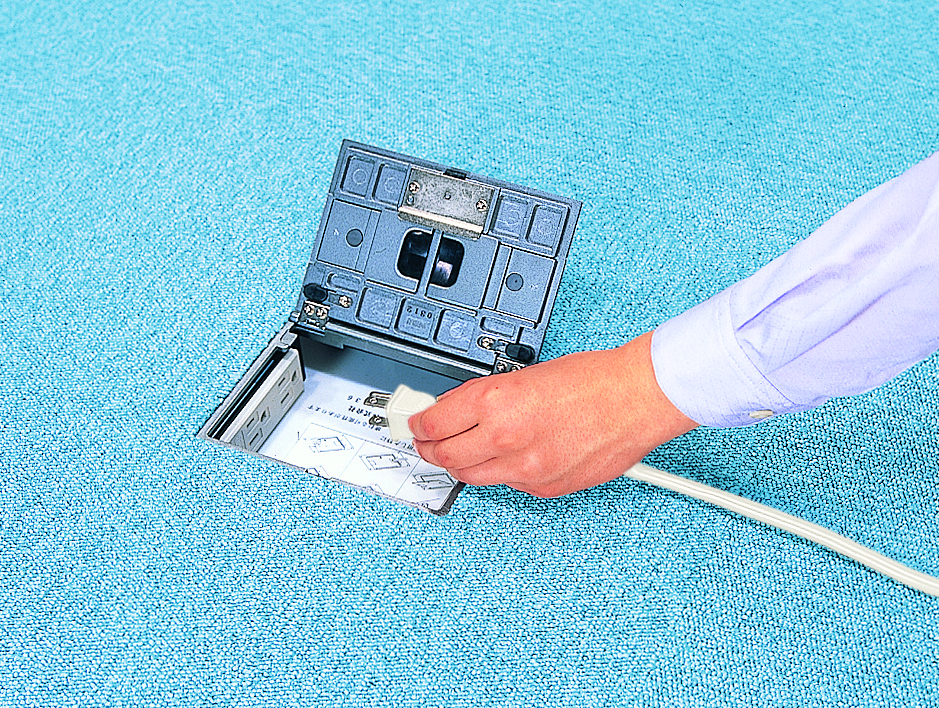 (Dual-Purpose Type)
(Dual-Purpose Type)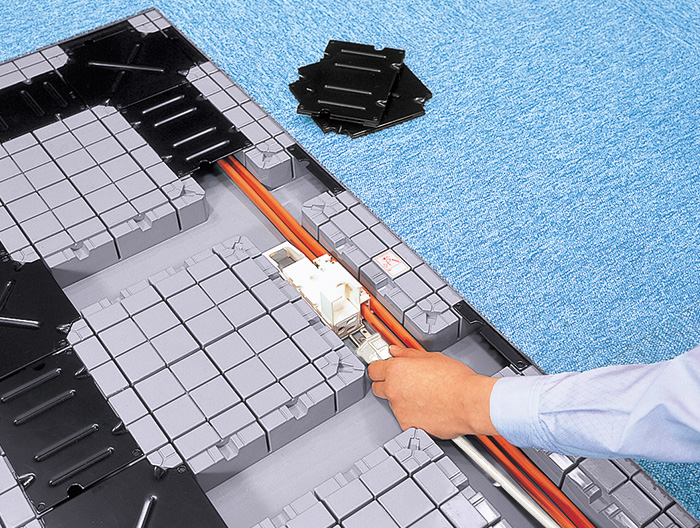 (In-Floor Type)
(In-Floor Type)There are a ton of cables spread across the office floor. It's dangerous and it just looks bad.
What can we do to clean up the office with this many cables laying around?
 A lot of cables are required for running an office. If all of those cables are laying on the floor, that certainly would be a problem. Not only does it harm the look of the office, but it could also cause people to trip and fall, which is dangerous. And, if the power cables get pulled out, it could cause valuable data to be lost. The best way to solve this problem would be to use access flooring.
A lot of cables are required for running an office. If all of those cables are laying on the floor, that certainly would be a problem. Not only does it harm the look of the office, but it could also cause people to trip and fall, which is dangerous. And, if the power cables get pulled out, it could cause valuable data to be lost. The best way to solve this problem would be to use access flooring.
Though there are many types of access flooring out there, the type that has become the most popular is high-capacity, low-profile access flooring that leaves no impact on the height of the office.
For inquiries, please contact us by using the inquiry form.







